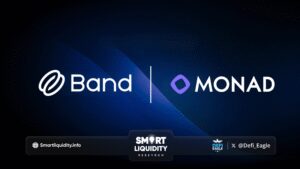DeFi Governance: The Backbone of Decentralized Finance


Decentralized Finance (DeFi) is revolutionizing finance by using blockchain for a transparent, open, and permissionless system. Central to this shift is DeFi governance, which determines decision-making in these decentralized networks. The field of DeFi governance is intricate and evolving, with numerous models and challenges.
What is DeFi Governance?
DeFi governance refers to the mechanisms and processes by which decisions are made and enforced within DeFi platforms. Unlike traditional financial systems, where centralized entities make decisions, DeFi governance is decentralized, meaning it is distributed across a network of participants. This decentralization ensures that no single entity has complete control, promoting transparency and fairness in decision-making.
Governance in DeFi can involve various aspects, including protocol upgrades, changes to tokenomics, and adjustments to the rules that govern the use and functionality of the platform. The aim is to create a system where stakeholders—such as token holders, developers, and users—can have a say in the direction and operation of the platform.
Key Components of DeFi Governance
- Token Holders: Token holders of a particular DeFi protocol often have a significant say in its governance. They may vote on proposals, participate in community discussions, and contribute to the development of the protocol.
- DAO (Decentralized Autonomous Organization): Many DeFi protocols are organized as DAOs, which are autonomous entities governed by a set of rules encoded in smart contracts. DAOs can automate decision-making processes and reduce the need for intermediaries.
- Governance Tokens: Governance tokens are often used to represent voting rights within a DeFi protocol. Token holders can use their tokens to vote on proposals and influence the direction of the project.
- Proposals and Voting: Proposals for changes or upgrades to a DeFi protocol are often submitted by community members. These proposals are then voted on by token holders, and the outcome of the vote determines whether the proposal is implemented.
- On-Chain Governance: DeFi governance is typically on-chain, meaning that all decisions and actions are recorded and verified on the underlying blockchain. This ensures transparency and immutability.
Models of DeFi Governance
DeFi governance models vary widely, reflecting the diversity of platforms and their specific needs. Here are some of the most common governance models found in DeFi:
Token-Based Governance
Many DeFi platforms use governance tokens to facilitate decision-making. Token holders can vote on proposals, influencing the platform’s direction. The weight of a participant’s vote often depends on the number of tokens they hold. Examples include platforms like Uniswap and Compound, where token holders vote on protocol changes and upgrades.
Liquid Democracy
Liquid democracy combines direct and representative democracy. Token holders can vote directly on proposals or delegate their voting power to representatives. This model aims to balance direct participation with expertise, allowing for more informed decision-making.
Quadratic Voting
Quadratic voting is a system where participants allocate votes based on their level of interest, with the cost of additional votes increasing quadratically. This approach seeks to give more weight to individuals with strong preferences while reducing the influence of those with more resources.
DAO (Decentralized Autonomous Organization)
DAOs are a prominent example of DeFi governance. They operate as fully autonomous entities governed by smart contracts. Members participate in decision-making through voting on proposals, and the outcomes are executed automatically by the DAO’s smart contracts. DAOs like MakerDAO and Aave exemplify this model.
Challenges in DeFi Governance
While DeFi governance offers numerous advantages, it also presents several challenges that need to be addressed:
Security Risks
DeFi governance relies on smart contracts, which are vulnerable to bugs and exploits. Governance proposals can sometimes include malicious code, posing risks to the platform’s security and user funds.
Voter Participation
Low voter participation can undermine the effectiveness of DeFi governance. Many token holders may lack the time or expertise to participate actively in governance decisions, leading to decisions being made by a small, potentially unrepresentative group.
Centralization Risks
Despite the decentralized nature of DeFi, there is a risk of centralization. Large token holders or influential entities may exert disproportionate influence on governance decisions, counteracting the principles of decentralization.
Complexity and Usability
DeFi governance mechanisms can be complex and difficult for the average user to understand. This complexity can create barriers to participation and hinder the overall effectiveness of the governance process.
Regulatory Uncertainty
The regulatory landscape for DeFi is still evolving. Uncertainty about how regulations will impact DeFi governance and operations can create challenges for platforms and participants, potentially affecting decision-making and compliance.
The Future of DeFi Governance
As DeFi continues to grow and evolve, several trends and innovations are likely to shape the future of governance in this space:
Enhanced Governance Models
New and improved governance models are being developed to address current challenges. These may include hybrid models that combine elements of different approaches or innovative mechanisms to increase participation and security.
Interoperability
As DeFi platforms become more interconnected, interoperability will play a crucial role in governance. Solutions that enable seamless interaction between different platforms will enhance the overall efficiency and effectiveness of DeFi governance.
Increased Focus on Security
Improving the security of smart contracts and governance processes will be a priority. This includes developing better auditing practices, robust security measures, and more resilient governance structures.
Greater Inclusivity
Efforts to make DeFi governance more inclusive and accessible will likely continue. This may involve simplifying governance processes, enhancing user education, and creating mechanisms that encourage broader participation.
Regulatory Adaptation
As regulatory clarity improves, DeFi platforms will need to adapt their governance practices to ensure compliance while maintaining decentralization. Collaboration with regulators and proactive compliance measures will be essential.
Conclusion
DeFi governance is a fundamental aspect of the decentralized financial ecosystem, influencing how decisions are made and implemented across platforms. While it offers significant advantages in terms of transparency and inclusivity, it also faces several challenges that need to be addressed. As the DeFi space evolves, ongoing innovation and adaptation in governance models will be crucial for ensuring the sustainability and effectiveness of these transformative financial systems.




